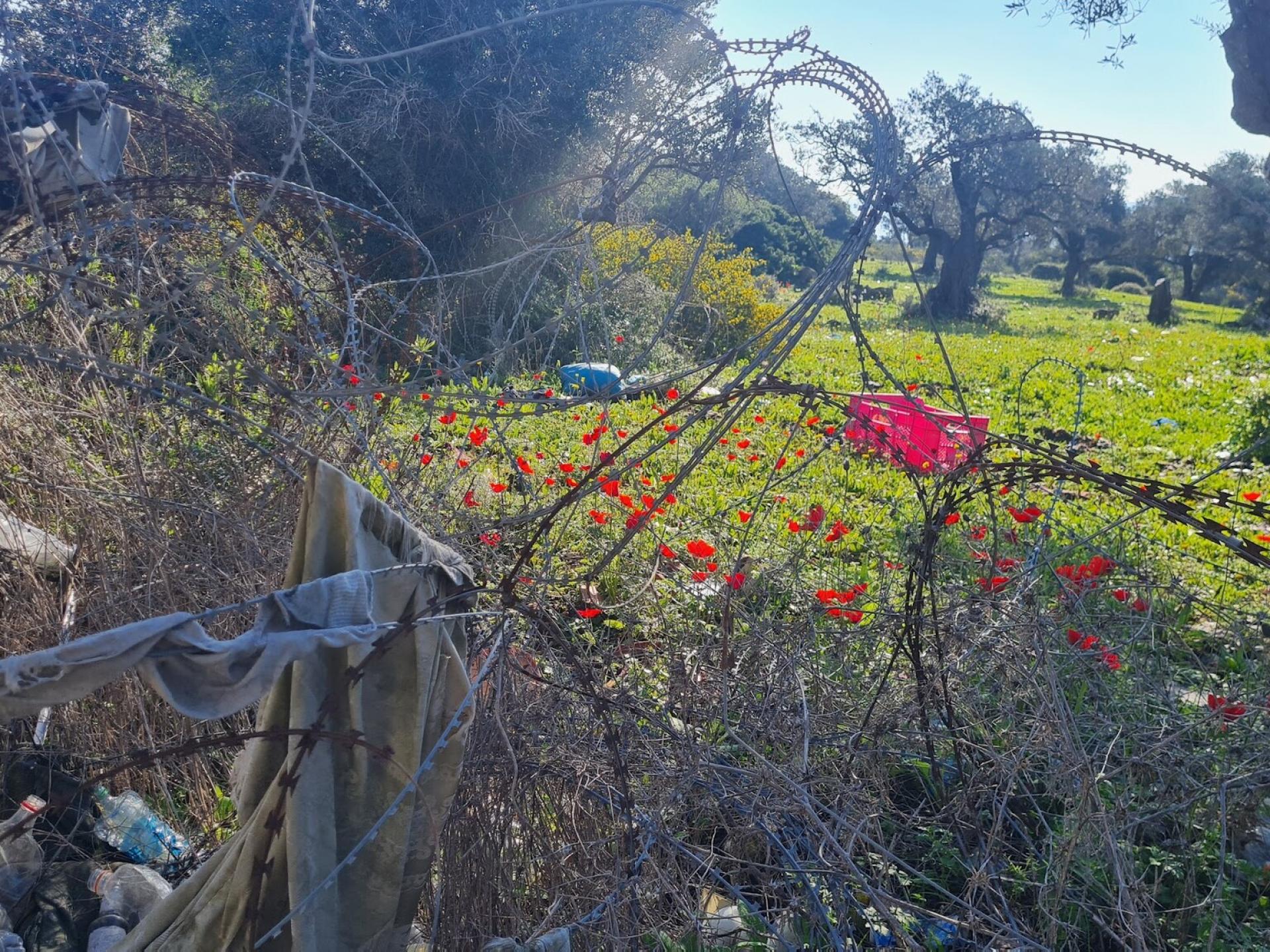The checkpoints are paralyzed but the occupation is flourishing
Heavy-hearted we went again to the same places we had monitored regularly for over twenty years. Until the breakout of the ‘black-Saturday’ war. Heavier-hearted we came back home. While on our way we remembered with longing days when we reported evil and hardship, days on which we met living people - even if they suffered and complained. Sometimes we even felt just and useful… But the situation now is seriously ill. No pulse, no air. No hope. In actual fact, since most checkpoints in the Occupied Territories are closed and no permits to be and work in the seam zone and in Israel are being issued, roads are empty, many businesses are closed, and a heavy cloud of no-livelihood-no-hope hovers over everything. The green and wonderful blossoming winter sights only deepened our sadness.
08:10 Toura-Shaked Checkpoint
Because of the Separation Wall and all sorts of installations, one can hardly detect the center of the checkpoint. But closer up one sees 2-3 cars being inspected at the same time. Car-doors are opened including the hood and boot. Dogs of the relevant army unit enter the car and sniff it out industriously. 10 minutes later the vehicles come out and continue on their way to the seam zone. There are Israeli-license-plate cars among them. We are not sure where they come from. This small and crowded checkpoint is constantly filled with more concrete and barbed-wire, shading tarpaulins above, bungalows, structures quite foreign such as water tankers, an arbitrary row of concrete blocks waiting who knows for whom, 2-3 black caravans and what not. A catalogue presentation of surveillance and defense means born to daddy occupation and mommy army in the past. The wall that divides the checkpoint parallel to the Separation Wall has grown a new story of spike-less iron netting that now makes it rise to a height of about 20 meters. All of this proves that defense against possible Palestinian terrorism must be renewed time and again. Furthermore, someone is making a LOT of money on all these nonsensical things. Most of the workers here are on their way to the Shaked industrial zone.
The LATE Agricultural Checkpoint Anin
It was closed down even prior to the ‘black-Saturday’ war, arbitrarily and with no consideration of Anin village farmers’ needs whose lands were already caged beyond the Separation Fence. Still - the checkpoint is being renovated. Will it be re-opened?
There are Arab workers here. The section of the Wall opened since its erection (about a year ago) has not yet been closed. In the past we were told that due to the high-voltage line running over this open section, it is dangerous to work there with cranes. Someone made a mistaken calculation and there is no solution in sight (‘one idiot throws a stone into a well and one-thousand wise men cannot find it.’)
Barta’a-Reihan Checkpoint
A few yellow minibus cabs wait in the car-park above for passengers who do not arrive. The drivers say that passage into the seam zone begins in the morning at around 6 a.m. About 200 people pass (prior to the war, mornings here saw about 5,000 men since 4:30 a.m.). They enter in groups of four, inspection takes time and therefore their passage is very slow. At Ya’abad-Dotan Checkpoint on the road to Jenin, traffic is sparse because of detailed and very slow inspection. Palestinians prefer to arrive at Barta’a Checkpoint om bypass tracks rather than get stuck at the Ya’abad Checkpoint.
Baq’a Checkpoint
Following the First Intifada, Israel confiscated 2000 dunams from Palestinian Baq’a village in order to erect the wall that separates it from Israeli Baq’a village, which eventually developed into a large, blooming town. They were both founded in the 17th century as two separate villages. Since the breakout of the war, pedestrians pass here twice a day, no vehicles allowed through. A soldier in the watchtower warns us of stones thrown from the Palestinian side. It happened only yesterday.
So how do Palestinians get along without permits and plenty of closed checkpoints?
When there is no livelihood, when hunger and despair gnaw away at any glimmer of hope for a normal life, the brain invents patents and even encourages cooperative initiatives. For example, Jews (undoubtedly religious) with vans pick up dozens of Palestinians in the Occupied Territories. such a vehicle can hold 20-23 crowded people. Each of them pays the driver 800 shekels or his wife or son. The vehicles with the Israeli plate and the Jewish driver pass without any inspection at checkpoint at the entrance to Israel and from there bring their customers to their destination. We'll save you the calculation: 23X800 = NIS 18,400.





